Uganda Airlines AMO completes first in-house engine swap on CRJ900
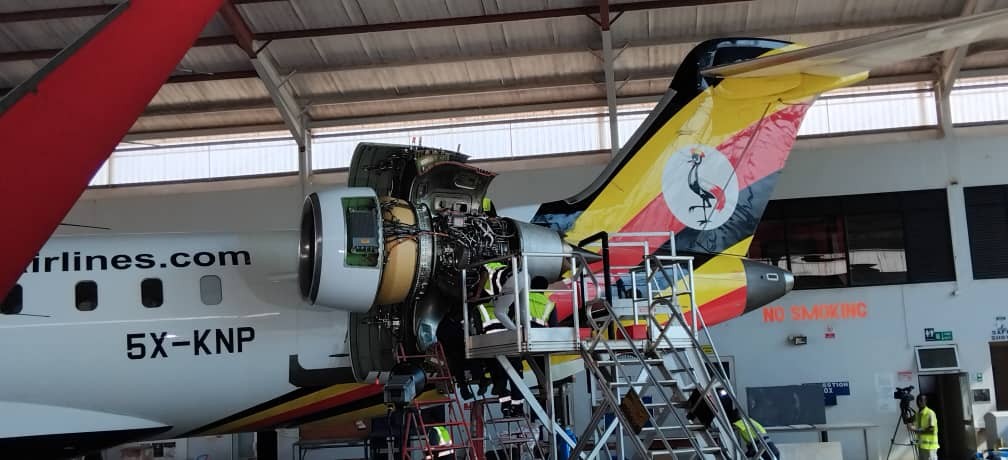
Flag carrier Uganda Airlines has reached a technical and strategic milestone with its Approved Maintenance Organisation (AMO), successfully carrying out its first in-house engine change on a CRJ900 aircraft.
The operation, completed this week at Entebbe, was conducted on aircraft 5X-KNP and involved replacing its left-hand General Electric CF34-8C5 engine with a new spare. The removed engine will be dispatched to manufacturer approved facilities for scheduled overhaul before returning for reinstallation on the aircraft’s right-hand side.
Though engine changes are part of routine airline maintenance, the event carries added weight for Uganda Airlines. It marks the first time its AMO has performed the procedure independently since receiving certification from the Uganda Civil Aviation Authority in March 2024.
The process is both delicate and complex. Engineers must first detach the engine from its mounts and carefully disconnect a web of hoses, pipes, and electronic systems. Vital components, collectively known as the Quick Engine Change (QEC) kit, are then transferred from the old engine to the new unit. Finally, the replacement engine is hoisted into position and secured to the aircraft before undergoing extensive safety checks.
Uganda Airlines described the milestone as proof of the AMO’s technical depth and growing independence. “This accomplishment highlights our capability to manage critical aspects of aircraft maintenance in-house while meeting the highest safety and regulatory standards,” chief executive Jenifer Bamuturaki, said during a media briefing.
Peter Emuge, head of engineering and Maintenance at Uganda Airlines, explained that although the engine was still serviceable, it was removed ahead of schedule to enable staggered maintenance of the aircraft’s powerplants. “This approach ensures that the aircraft is not grounded for extended periods, as would be the case if both engines were removed at the same time,” he noted.
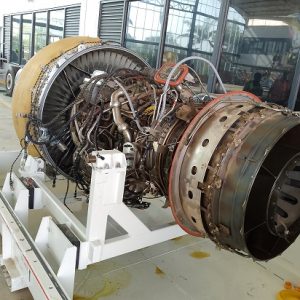
The General Electric CF34-8C5 turbofan that was in the number 1 position on 5X-KNP is due for inspection and replacement of the high pressure turbine (HPT) which was approaching the manufacturers limit of 8000 cycles
The achievement comes at a symbolic moment. Uganda Airlines is set to mark its sixth anniversary on 28 August 2025, and the development adds to the list of milestones since the carrier’s revival in 2019. Beyond technical success, it underscores the airline’s longer-term strategy to reduce reliance on foreign contractors for maintenance, a key cost driver in aviation.
According to Bamuturaki, conducting the engine change in-house saved the carrier hundreds of thousands of dollars compared to flying the aircraft abroad for the procedure. She added that the turnaround time was also drastically reduced, with the aircraft returning to service in five days, instead of the much longer downtime that would have been required if the work had been outsourced internationally.
The AMO is staffed Ugandan engineers, supported by a deliberate investment in skills transfer. At present, 18 graduate trainees drawn from Soroti Flying School and Ugandan universities are undergoing structured training in aircraft maintenance. Over a three-year programme, they are being prepared to qualify for aircraft maintenance licences, positioning them as the next generation of technical specialists in the country’s aviation industry.
Looking ahead, Uganda Airlines plans to scale its AMO into a full-fledged MRO. Plans are underway to build hangars and specialised workshops at Entebbe that will enable base maintenance – the heavy checks carried out when an aircraft is taken out of service and worked on in a hangar. These facilities will include shops for hydraulics, pneumatics, avionics, wheels, batteries, composites, and airframe overhaul.
The long-term ambition is to emulate the success of continental leaders such as Ethiopian Airlines, whose maintenance, repair and overhaul (MRO) division has grown into one of Africa’s largest aviation service providers, serving not only its own fleet but also dozens of regional and international carriers. Similarly, Kenya Airways’ MRO unit at Nairobi has developed a steady stream of third-party business, bolstering the airline’s revenue base even during difficult financial periods.


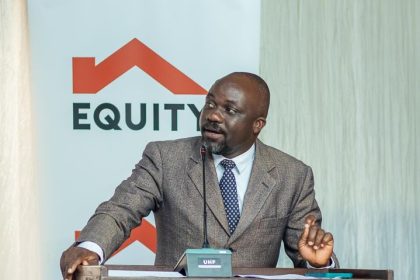 Equity Bank extends SME support drive to Arua
Equity Bank extends SME support drive to Arua
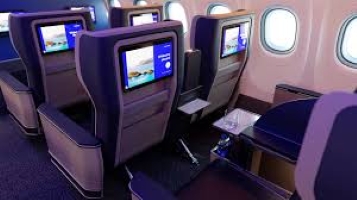 United Airlines forecasts record 3.1 million passengers over Labour Day
United Airlines forecasts record 3.1 million passengers over Labour Day
 Eight transformative lessons for SME success from Mbale TUPANGE Business ne Equity Bank forum
Eight transformative lessons for SME success from Mbale TUPANGE Business ne Equity Bank forum
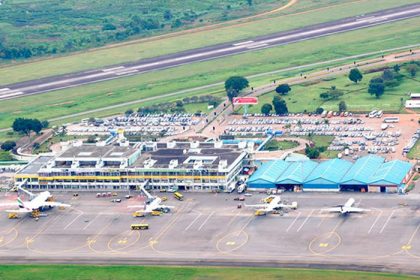 Entebbe sets new monthly passenger record, driven by events and tourism
Entebbe sets new monthly passenger record, driven by events and tourism
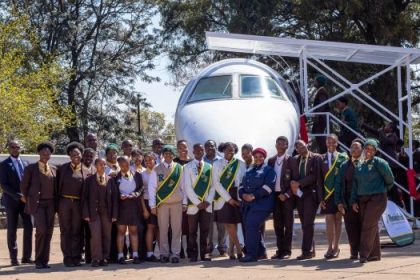 Airlink donates Embraer jet to support aviation training in Gauteng schools
Airlink donates Embraer jet to support aviation training in Gauteng schools
 From Classroom to Tourism Boardroom: Saleh Naminya’s inspiring story sets the tone at Equity Bank’s Tupange Business Forum in Mbale
From Classroom to Tourism Boardroom: Saleh Naminya’s inspiring story sets the tone at Equity Bank’s Tupange Business Forum in Mbale
